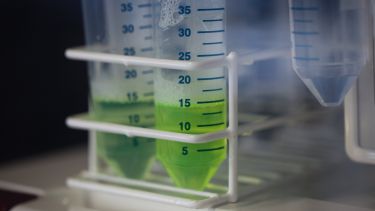Bioavailability and biodegradation potential of hydrocarbons in polluted sites

This international project, sponsored jointly by the Royal Society and Chinese National Science Funding Council, will examine molecular level biological controls on the bioavailability of several aromatic hydrocarbon compounds that are common pollutants in groundwater, soils and industrial wastewater.
Bioavailability is an important factor that influences the potential for biodegradation of organic chemicals in environmental systems and may limit remediation options and treatment efficiency.
Summary
Aromatic hydrocarbons are important organic pollutants in soil, groundwater and industrial waste water requiring treatment.
Within this group, petroleum hydrocarbons (eg benzene, toluene, xylenes and ethylbenzene – BTEX) and polycyclic aromatic hydrocarbons (PAHs) are very common, released from refineries and petrol filling stations (BTEX) and gaswork sites and coking plants (PAHs), among others.
Remediation technologies for polluted land and groundwater can be expensive, ineffective or require extended timescales to achieve environmental quality standards.
Natural attenuation and bioremediation are potentially more cost-effective and sustainable options to manage polluted sites. However, the interaction between microorganisms which biodegrade organic pollutants and influence remediation or treatment performance, is poorly understood.
Of particular interest are factors which control the bioavailability (and therefore biodegradation potential) of organic pollutants; these include contaminant composition and the development of metabolic capability for biodegradation through gene transfer within the microbial consortia.
The mechanism controlling gene transfer and how it is influenced by such factors is unclear and varies for different organic chemicals. In addition, it is essential to identify functional bacteria for biodegradation, their community structure and diversity, relative to contaminant composition, to interpret bioremediation performance.
Project aims
The research objectives are to
- identify and isolate toluene-, xylene- and PAH-degrading microorganisms from contaminated groundwater and industrial waste water samples
- compare changes in microbial community composition between uncontaminated and contaminated samples in response to toluene and xylene concentration
- identify and characterise the toluene and xylene degradation genes
- relate bacterial species distribution and function in groundwater to the in-situ contaminant distribution
- extend this analysis to PAHs in polluted soils
Scientific approach
Using clean and polluted groundwater samples from a gasoline-contaminated UK site, along with PAH-contaminated industrial wastewater, microbial DNA and RNA will be extracted to
- isolate toluene-, xylene- and PAH-degrading microbes and identify species by biomarker 16S-rRNA
- identify functional genes by PCR analysis
- obtain community profiles of species diversity by DGGE analysis
These data will be compared with sample organic chemistry.
The potential for horizontal gene transfer and exchange of degradation potential between species will be deduced by bacterial conjugation methods, to determine if degrader genes are located at the plasmid or chromosome.
Hydrocarbon-degradation genes present in the plasmid of cells suggests that horizontal transfer of degrader genes may occur more easily between species within the indigenous microbial consortia. This analysis will also be done for PAHs in polluted soils from sites in the UK and China.
The results will
- provide new insight on the function of microorganisms which biodegrade important organic pollutants in groundwater, soil and industrial wastewater
- reveal how this capability is transferred and expressed at a genetic level to control the bioavailability of these pollutants for degradation
- show the effect of pollutant type and concentration on the community composition of hydrocarbon-degrading microorganisms and pollutant bioavailability
- provide a methodology to interpret organic pollutant biodegradation potential at contaminated sites for decisions on environmental risk and remediation
Project partners
- College of Water Sciences, Beijing Normal University
- Corus Ltd
